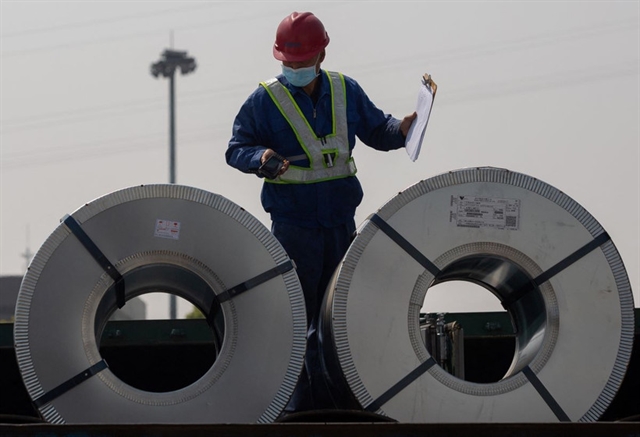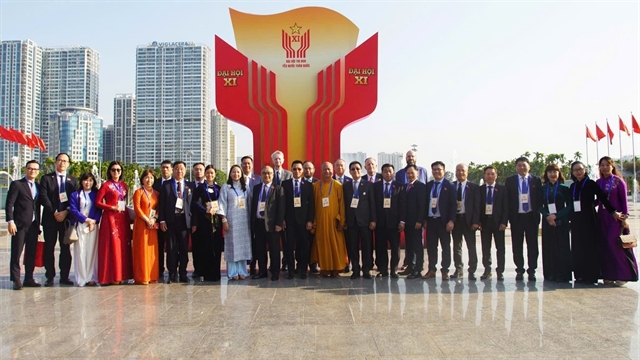 Society
Society

.jpg) |
| Workers tend seedlings for afforestation at the Management Board of Xuân Liên Nature Reserve's Forest Tree Research Centre in central Thanh Hóa Province. — VNA/VNS Photo Vũ Sinh |
THANH HÓA — Central Thanh Hoá Province needs to utilise its potential to fully develop a modern and sustainable agro-forestry industry, the provincial People’s Council said.
Speaking at the 11th meeting of the provincial People's Council for the 2021 – 2026 term taking place from December 9 to 11, Director of the Department of Agriculture and Rural Development Cao Văn Cường said Thanh Hoá has a lot of potential and advantages for agricultural development.
Figures from the department show that Thanh Hoá has more than 243,100 hectares of agricultural land, accounting for 21.9 per cent of the total area.
Of that area, more than 138,900 hectares for rice cultivation, including nearly 58,540 hectares for annual harvests, and the rest for perennial harvests.
The province has nearly 691,150 hectares for forestry production, accounting for 75 per cent of the total natural area, third most in the country.
Cường said the development of the agricultural sector has not yet been commensurate with its potential and strengths.
He stressed that there are no large-scale agricultural and forestry planting areas with high added value and brand name agricultural products, especially in the midland and mountainous areas.
Cường said agricultural production remains spontaneous, small-scale and depends mainly on natural conditions.
Farmers depend on market prices and switch to other crops as prices decline. Their processing and storage capacity is limited, affecting production and consumption.
When farmers enjoy bumper crops, supply becomes higher than demand, leading to a congestion of agricultural products, he said.
To solve these problems, Cường said the key solution is converting low-yield crop areas to create large-scale raw material areas with added value, while, at the same time, expanding agricultural production links with factories and companies to create sustainable production and supply chains, and build typical products with economic value of each locality.
Localities need to avoid oversupply of certain agricultural products and invest in organic agriculture, high-tech agriculture, and ecological agriculture to create quality and brand value for the market.
.jpg) |
| Cordyceps, a high-grade medicinal herb of central Thanh Hóa Province, are packed at VAC Agricultural Support Centre in Lam Sơn Ward in Thanh Hoá City. — VNA/VNS Photo Vũ Sinh |
Cường said it is necessary to continue to stabilise rice growing in order to ensure food security.
Based on climate and soil conditions, localities should develop suitable and typical crops such as sedge, yellow-flowered sticky rice and cinnamon; improve the operational capacity of cooperatives and associate with households to form large and concentrated production areas; improve the investment environment to attract enterprises to agricultural production; and strengthen the application of science and technology to create breakthroughs in crop restructuring, he said.
Cường said the province has stepped up renovation of adjacent mixed gardens into concentrated production areas and developed large-scale production areas.
Currently, Thanh Hóa has accumulated 16,240 hectares of agricultural land and converted nearly 11,140 hectares of rice land, nearly 3,270 hectares of sugarcane, 1,412 hectares of cassava, and nearly 4,970 hectares of rubber.
Large production areas have been formed with many value-added products. Up to now, the province has had 236 OCOP (One Commune-One Product) certified products.
.jpg) |
| Chili sauce products of Spico Company in Hàm Rồng Ward in Thanh Hoá City is a 3-star OCOP certified product. — VNA/VNS Photo Vũ Sinh |
He affirmed that building stable raw material areas and trade promotion would attract businesses to invest in factories in the localities, solving agricultural output as well as creating stable jobs for farmers.
In addition, authorised agencies need to promulgate mechanisms and policies to encourage investment in the agricultural sector, he added.
Speaking at the meeting, Chairman of the provincial People's Council Đỗ Trọng Hưng said the agriculture sector needs to review, amend and supplement agricultural development policies for the 2021-2025 period; review and adjust concentrated production areas and integrate them into provincial planning for the 2021-2030 period with a vision to 2045.
The leader urged the sector to prepare plants and animals for large-scale production with value chain-linked production associated with product brands.
He noted the promotion of researching and applying science and technology in production, processing and consumption of local agro-forestry companies.
Hưng also stressed the building of an agricultural product trading floor, connecting the consumption of all agricultural products in the province, along with building and setting up planting area codes, traceability and protection registration for agricultural products to create better conditions to attract businesses to invest in agriculture. — VNS




